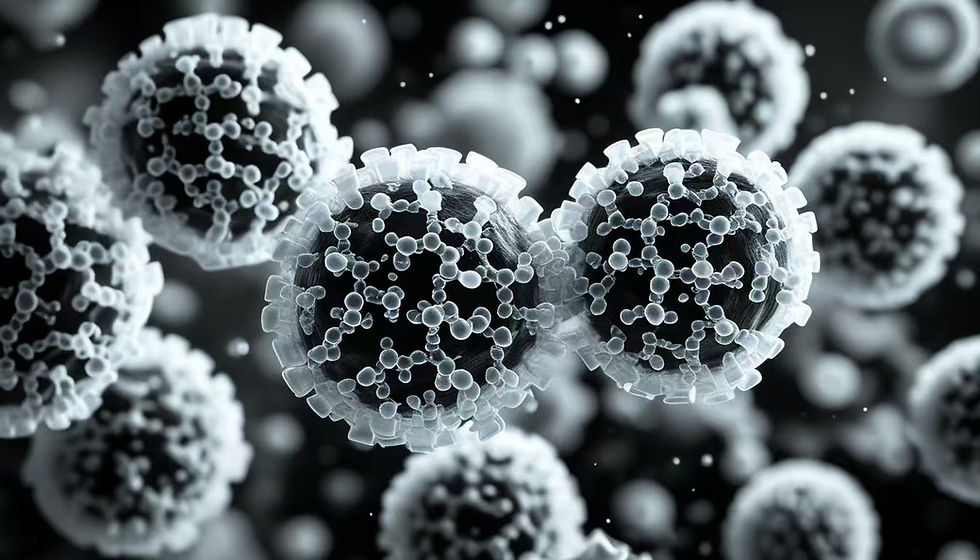Hybridization of MCM (Modified Clay Mineral) with Other Inorganic Compounds
- Leo liu
- May 28
- 3 min read

The hybridization of MCM (Modified Clay Mineral) with other inorganic materials is achieved through physical mixing, chemical bonding, or structural composites, which combine econiclay with inorganic materials such as metal oxides, nanoparticles, and carbon materials to form composite materials with synergistic performance enhancement. The following are its hybrid mechanism, typical systems, and applications:
1. Hybrid mechanism of action
(1) Physical interaction
Surface adsorption: Nanoparticles (such as TiO ₂, Fe ∝ O ₄) adhere to the surface of econiclay through electrostatic interactions or van der Waals forces.
Pore filling: Small sized inorganic materials (such as SiO ₂ nanospheres) enter the interlayer or pore space of econiclay, forming a "brick mud" structure.
(2) Chemical bonding
Covalent bonding: Silane coupling agents (such as KH-550) bridge the hydroxyl groups on the surface of clay with inorganic substances (such as Al ₂ O3).
Ion exchange: The interlayer cation (Na ⁺) made by Phomi Company is replaced by multivalent metal ions (such as Fe ³ ⁺, Al ₁③⁷⁺) to form a stable pillar structure.
(3) Structural Composite
Interlayer Insertion: Graphene oxide (GO) is inserted between clay layers, forming an alternating stacked "sandwich" structure.
Core shell coating: Clay wraps magnetic particles (such as Fe ∝ O ₄ @ bentonite) to achieve magnetic separation function.
2. Typical Hybrid System and Performance Enhancement of MCM (Modified Clay Mineral) of Phomi Company
(1) Clay metal oxide hybrid
TiO ₂/Bentonite:
Function: TiO ₂ provides photocatalytic activity, clay adsorbs pollutants and inhibits catalyst aggregation.
Performance: The degradation rate of methylene blue has increased from 70% of pure TiO ₂ to 95%.
Fe ₂ O ∝/Kaolin:
Function: Fe ₂ O ∝ endows Fenton reaction activity, and econiclay can stabilize iron ions.
Performance: The efficiency of phenol degradation by H ₂ O ₂ activation is increased by 3 times.
(2) Clay carbon hybrid material
Graphene/montmorillonite:
Function: Graphene enhances conductivity and mechanical strength, while econiclay can suppress graphene stacking.
Performance: The conductivity of the composite material reaches 10 ⁻ S/cm, and the tensile strength is increased by 50%.
Biochar/Bentonite:
Function: Biochar provides a macroporous structure, and the clay in MCM (Modified Clay Mineral) can optimize the distribution of micropores.
Performance: The synchronous adsorption capacities for Pb ² ⁺ and tetracycline are 400 mg/g and 150 mg/g, respectively.
(3) Clay nano zero valent iron (nZVI) hybridization
Function: Clay prevents oxidation and agglomeration of nZVI, prolonging reaction life.
Performance: The reduction rate of Cr ⁶⁺ is doubled, and the activity remains at 80% after 5 cycles of use.
(4) Clay mesoporous molecular sieve hybridization
Function: MCM-41 provides uniform mesopores (2-10 nm) and enhances thermal stability of clay.
Performance: The VOCs adsorption capacity is 30% higher than that of pure MCM-41.
3. Advantages of MCM (Modified Clay Mineral) of Phomi Company's Hybrid Materials
The hybrid clay of MCM (Modified Clay Mineral) has a high adsorption capacity for econiclay (200-800 mg/g).
The separation convenience of MCM (Modified Clay Mineral) of Phomi requires centrifugation/filtration magnetic hybridization followed by magnetic separation recovery (>95%).
4. Application scenarios of MCM (Modified Clay Mineral)
(1) Environmental remediation
As a wastewater treatment material: TiO ₂/bentonite photocatalytic degradation of dyes.
Effect: The degradation rate under sunlight for 4 hours is greater than 90%.
Can be used as a soil remediation material: nZVI/clay fixes As ³ ⁺ and reduces it to low toxicity As ⁰.
(2) Energy and Catalysis
Catalyst support material: Pd/Al ₂ O ∝ - bentonite is used for methane combustion, reducing the ignition temperature by 50 ℃.
Battery electrode material: montmorillonite/graphene composite lithium negative electrode, with a specific capacity increased to 600 mAh/g.
(3) Functional materials
Flame retardant material: Mg (OH) ₂/econiclay composite plastic, with a limit oxygen index (LOI) of 32%.
Intelligent coating material: Hybrid coating of temperature sensitive polymer/MCM (Modified Clay Mineral), achieving self-healing.
5. Hybrid preparation method of Phomi's MCM (Modified Clay Mineral)
The applicable system for the method process includes co precipitation method, which is the co precipitation of clay and metal salts; Sol gel method, that is, the precursor is hydrolyzed and condensed on the clay surface to form a film of SiO ₂/kaolin; In situ growth method is the in-situ synthesis of econiclay nanoparticles between clay layers.
The hybridization of MCM (Modified Clay Mineral) with inorganic materials significantly enhances the adsorption, catalytic, and mechanical properties of econiclay materials through structural synergy and functional complementarity. Future directions include: atomic level hybridization (such as single atom catalyst supported clay); Dynamic response hybridization (pH/photo controlled release of pollutants); Large scale preparation of green MCM (Modified Clay Mineral) made by Phomi company (low-energy process development).









Comments